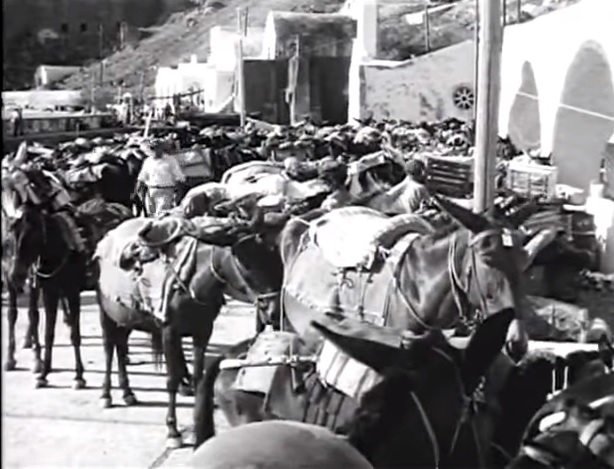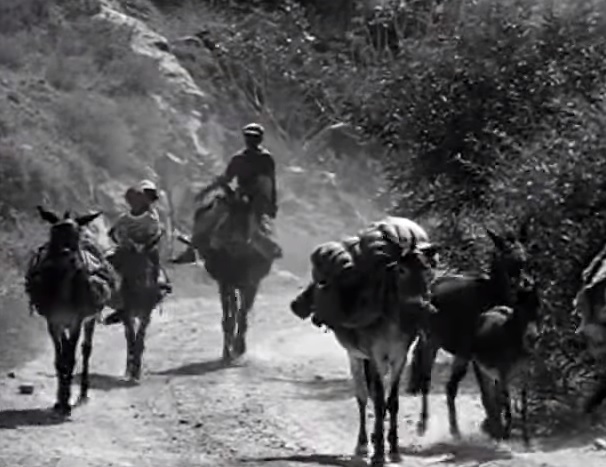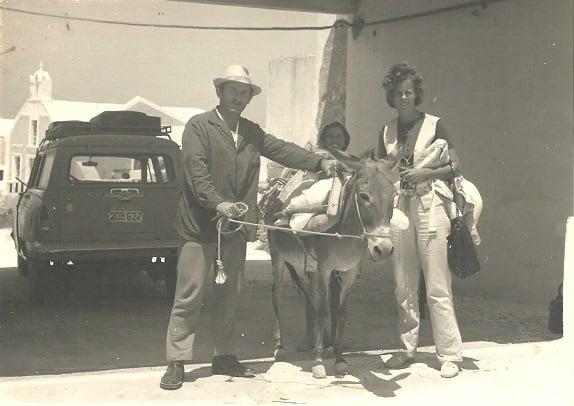
There is a frenzy of articles about animal abuse, and in particular, donkeys and mules on Santorini almost every summer, but we need a historical perspective, argues Michael Ermogenis an advisor to the Santorini Chamber of Commerce.
By Michael Ermogenis
There is no excuse for animal abuse, exploitation, or cruelty. Let’s just state that up front, so there is no confusion about the fundamental principles of belief that we should all support in our societies worldwide.
There is, however, context and perspective, which require consideration when we pass judgment on the situations and activities of others.
The frenzy of articles about animal abuse, and in particular donkeys and mules on Santorini, is a classic example of a social media storm that is nearing “escape velocity” and is orbiting the world virally within minutes.
Most such articles are ill-informed, and inaccurate at best — and are outrageously false at worst, contrived, disingenuous, and written with almost zero regard to context or historical relevance.
Santorini topography is unique
One could never fully claim to understand the role of the donkeys and mules on an island like Santorini unless he takes the island’s topography into consideration.
A small island, Santorini is not unique in its isolation, but its topography is unique, and therefore its way of life has, by necessity, had to adapt to the demands of the land.
Its three largest villages, Fira, Oia, and Imerovigli, are perched some 250+ meters (820 feet) above sea level, and cling onto the cliff face of a volcanic caldera. Seen from the water, it’s as if someone has painted the villages onto the cliffs. It is a unique sight, with its own unique architectural history.

As with all islands, Santorini’s gateways are its ports. Supplies and trade were always conducted via these means, and even inter-village trade between Fira and Oia was handled by boats of all sizes.
All goods, both domestic and traded, were imported and exported via the main ports of the island, as is the case with all islands. On Santorini, however, this means that they had to be taken down or up the steps of the port — which number between 280 and 300 for the stairways of the different ports.
Donkeys and mules only way to transport goods
The only way this could be done in ancient times, or even in recent history, was via mules and donkeys.
These animals were the absolute lifeline of the local people, and were their invaluable assistants in conducting business and in simply being able to live on the island.
Hundreds of mules would be used daily to transport goods and people to and from the villages. Everything from food supplies and trading goods, to furniture imported from faraway countries, would be transported by these animals up or down the steps connecting the ports to the villages above.

These images show how the island functioned at one time. The mules were not something for the entertainment of tourists — they were an essential element of life on this island.
Just as horses were for centuries the vehicle that fueled expansion of societies and trade routes across most continents, the mule was the lifeline of the islanders of Santorini.
It is a fact that there wasn’t a family on the island that did not own at least a couple of donkeys or mules (or both). It is said that the number of mules and donkeys on the island fifty years ago outnumbered the island’s human inhabitants.
The fact is that without donkeys and mules, nothing could ever have been built on the caldera – certainly nothing larger than a small bathroom or a kitchen, not to mention entire hotels in four months.
So to put the historical use of mules and donkeys into proper perspective, these animals are not here for the amusement of what these organizations have termed “lazy, fat tourists.” They are here because, without them, this island could simply not have developed into what it is today.
To this very day, Santorini still could not function the way it does without these animals.
The first tourists began to arrive in the early ‘60s — to an island that offered virtually nothing in the way of amenities. Many of the locals had literally never left their island before, so even seeing foreigners was an entirely new experience.
There was no chairlift in those days, so the only convenience offered to visitors was a mule or donkey ride to the village above. It was done out of necessity, but it became symbolic of the island even though the same is done at dozens of places with similar topographies around the world.
Tourism did not bring donkeys and mules
Tourism did not, however, bring the donkeys and mules to the island nor did tourists stop the animals from doing their normal work on the island. Tourism simply became an additional income stream for mule drivers, especially during summer months.

Eventually, ports and roads were built, the chairlift was established, and supplies were transported by semi trailers instead of mules. But the quaint ride on a mule was still associated strongly with the “Santorini tradition.”
Nobody would ever say that there aren’t owners who neglect their animals. I would like to think that no owner harms his animal on purpose, but there is no doubt that bad or ill-informed practices exist.
There is also the important point that a mule is not a donkey. There is a significant difference in size and strength. Most animals used on Santorini for construction work, as well as tourist transport, are mules.
However, there is a lot to be said about awareness and training provided to owners. Not all, but some, are still stuck in mindsets they inherited from generations past. The world has changed around them in ways they cannot even comprehend.
They need to be brought into line with globally-accepted standards — and they need to understand that the island’s reputation is at stake. The local authorities need to apply new standards and laws, as well as create new facilities for the animals and their owners (all of which is being done at this point in time).
The moral of this story is not to be too quick to make judgement calls without being willing to ask questions, to seek context, and to verify the motives of the “news” source. Social media is creating a dangerous world in which the few can control the thinking and beliefs of the many.
In other words, everything is not always as it seems.
Michael Ermogenis is a management consultant and strategic advisor to the Santorini Chamber of Commerce. He lived in Oia for twelve years and is the founding member of the “Save Oia” Campaign. He is also the founding member of the Mediterranean Alliance, which includes the localities of Venice, Oia, Corfu, Dubrovnik, Rhodes & Crete.
To read a longer version of this article visit the page here.
See all the latest news from Greece and the world at Greekreporter.com. Contact our newsroom to report an update or send your story, photos and videos. Follow GR on Google News and subscribe here to our daily email!



